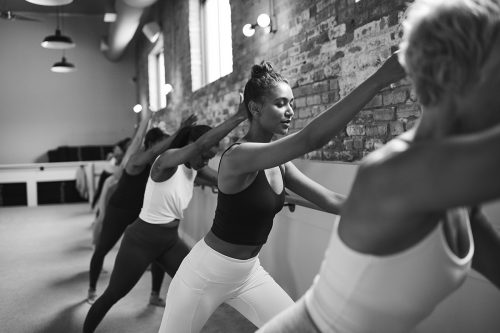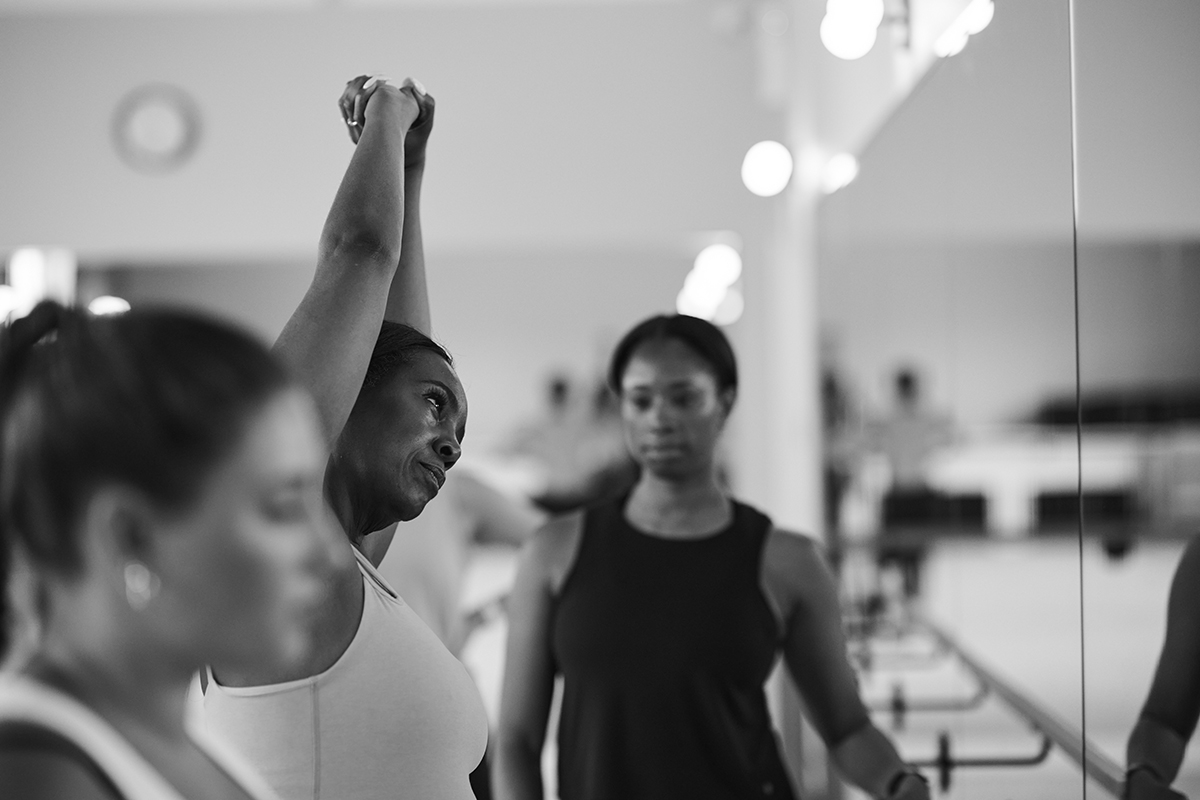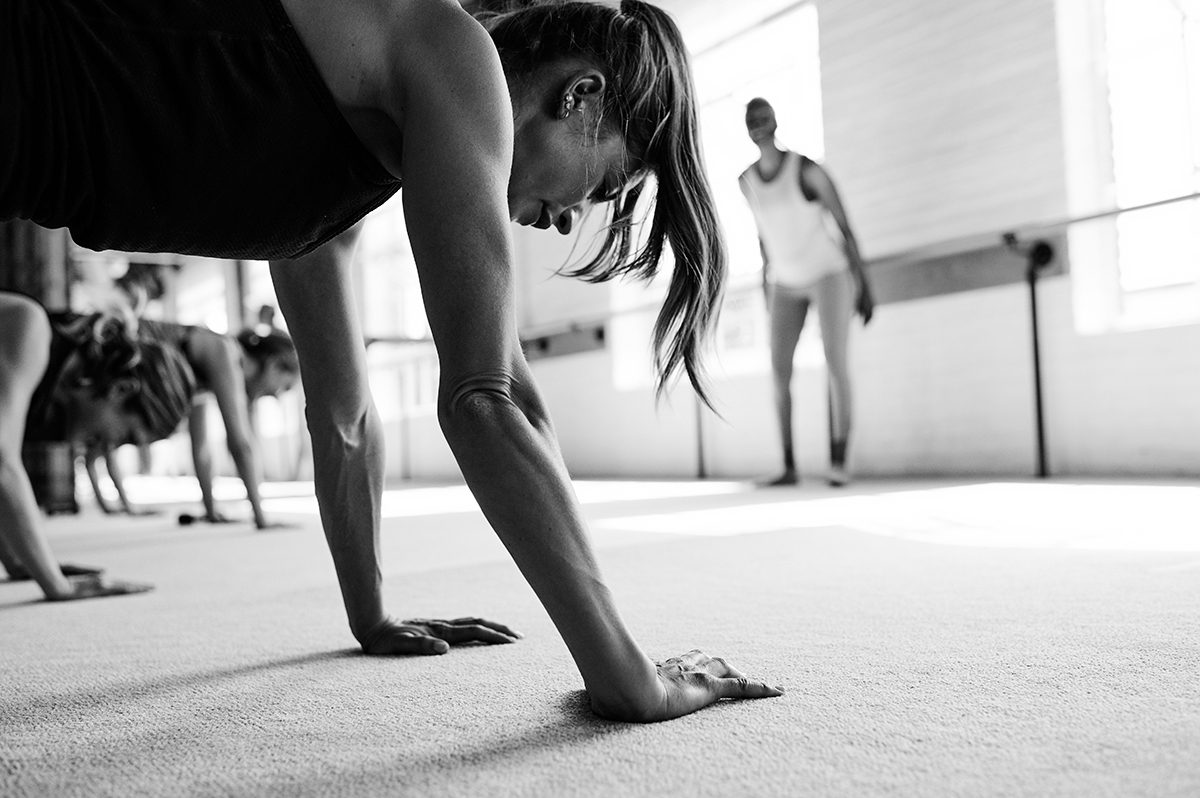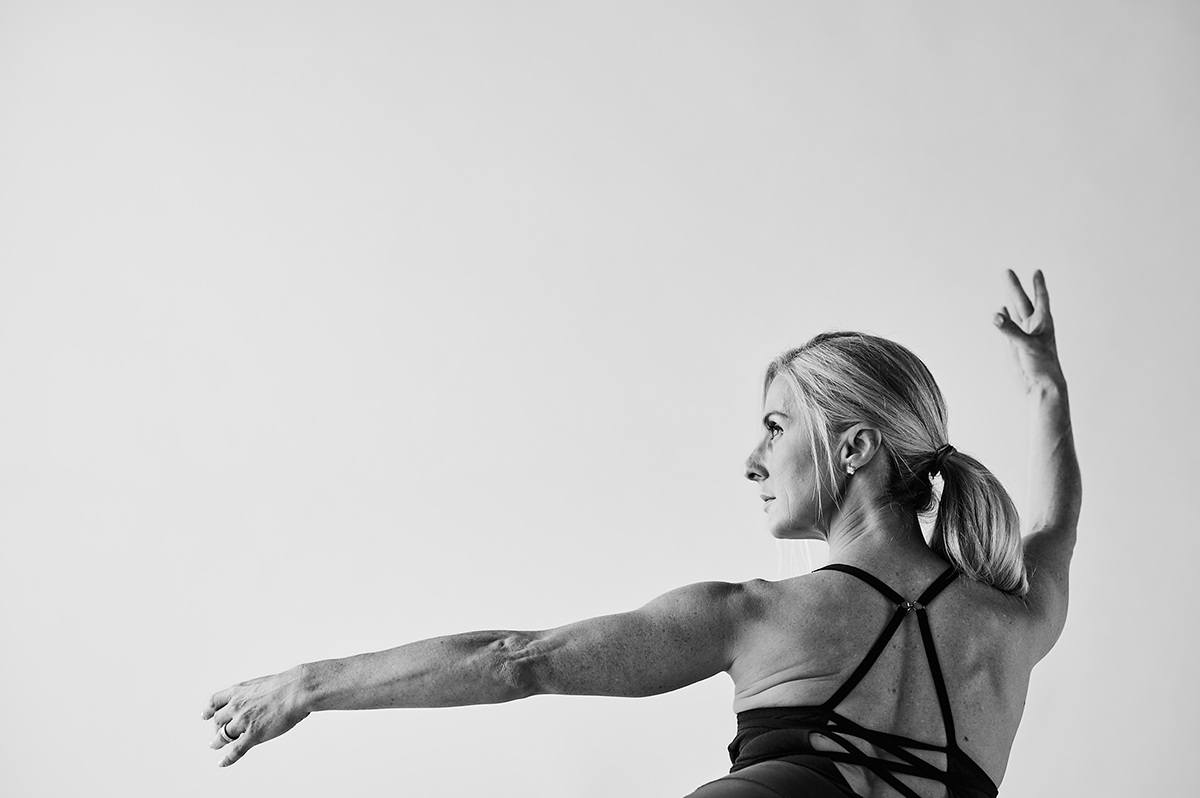New clients! For a limited time, Get 13 Classes for $78 (only $6 per class)
The 7 Best Serratus Anterior Exercises and How To Do Them
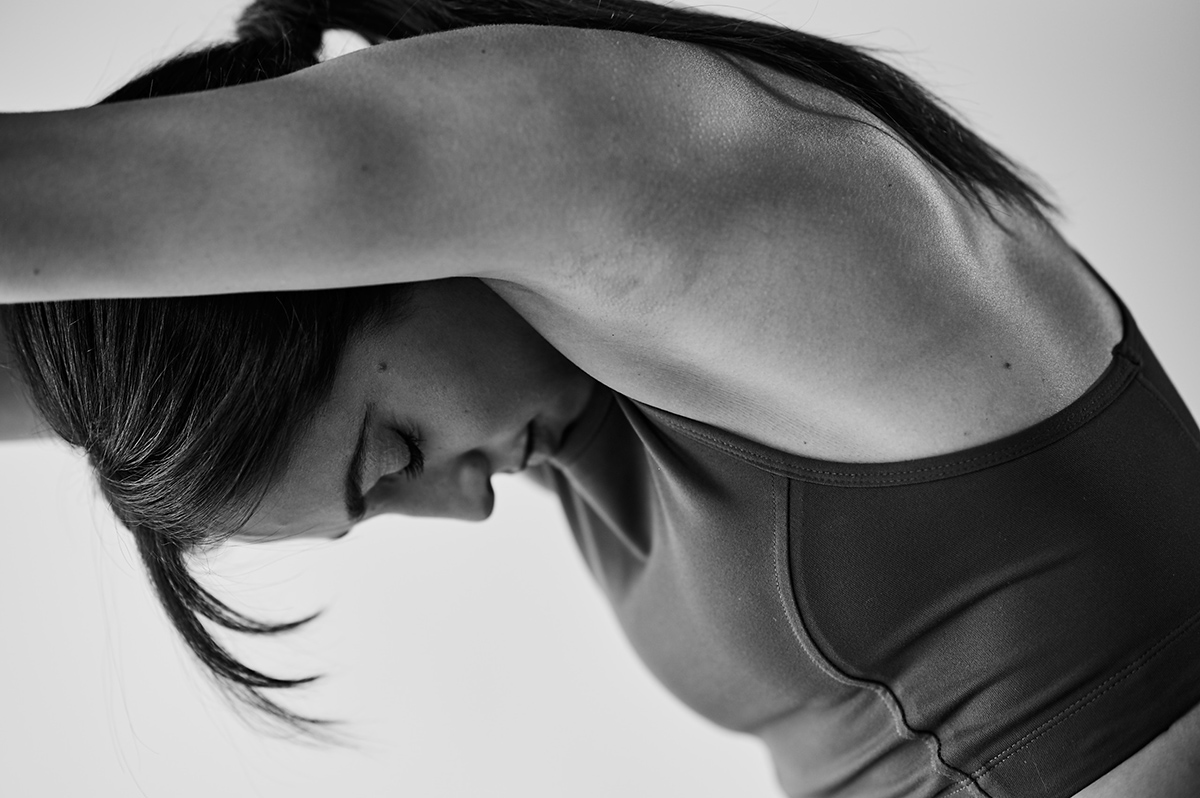
It’s important to focus on the major muscle groups like your chest, legs, back, and arms when strength training. Yet a lesser-known muscle called the serratus anterior is just as critical — and it’s often overlooked.
The serratus anterior plays a crucial role in shoulder blade (scapular) stability, helping you with overhead exercises and even daily movements. By adding serratus anterior exercises into your routine, you can potentially prevent injuries, improve your posture, increase scapular stability, and gain overall strength.
Read on to learn:
- What is the serratus anterior?
- How does the serratus anterior affect daily movement?
- 7 exercises for serratus anterior strength
- Stretches for your serratus anterior
What Is the Serratus Anterior?
So, just what is this underrated muscle with such big importance? The serratus anterior is a large muscle that wraps around the outside of your rib cage. The muscle group is responsible for scapular (shoulder blade) protraction and helps your shoulders maintain the proper position during movements like punching. For that reason, you might hear this muscle called the “boxer’s muscle” or “big swing muscle.”
The muscle fibers run in a fan-like pattern, which is why the muscle is named “serratus,” which translates to “saw-toothed” in Latin.
Where is the serratus anterior?
The serratus anterior is located on the side of the chest, spanning the upper ribs and attaching just below the shoulder blades. The main part of the muscle lies deep beneath the scapula and pectoral muscles, and in athletic bodies, it may even be visible to the naked eye.

What Does Your Serratus Anterior Do?
From helping you throw a punch to keeping your posture straight, here are a few of the actions this multi-tasking muscle takes on — and why strengthening it is so important.
- Assists in everyday movements: When you raise your arms above your shoulders, your serratus anterior on each side tilts your shoulder blades upward at the outer edges, which helps your arms move around more easily at a higher height. That’s why the serratus anterior is so crucial for everyday movements that involve reaching overhead. Think: putting on a shirt, placing an item on a shelf, throwing a ball overhead.
- Promotes scapular stability: Together with your rhomboids, the serratus anterior also helps to keep your shoulder blades in place. One of them kicks in when your arms are being pulled forward and the other takes over when your arms are being pushed back. For example, when you hold weights out in front of you, your rhomboids are activated so your shoulder blades don’t spread too far apart. Alternatively, when you’re pushing against something, your serratus anterior takes over to prevent your shoulder blades from collapsing inward.
- Helps maintain good posture: Without a strong serratus anterior, your posture may suffer. That’s because when it’s firing properly, the serratus anterior works to anchor and stabilize the shoulder blades, creating an open chest and lifted posture. Maintaining good posture not only helps you stand a little taller, but can prevent back and neck pain, too.
- Prevents injury: The serratus anterior is also a protective muscle. Most importantly, it prevents winged scapula (also known as scapular winging), a condition that can occur when your serratus anterior muscle is weak or dysfunctional. A winged scapula occurs when one of your shoulder blades sticks out; it makes performing everyday movements like picking up your child or carrying groceries difficult. A functional, strong serratus anterior also protects against neck pain because it enables your arms to move in a large range of motion without compressing your neck.
For these reasons and more, strengthening your serratus anterior is crucial. Without this well-functioning muscle, you may experience increased neck and back pain, increased risk of injury, and a limited range of motion through your arms and shoulders.
What happens when the serratus anterior is weak?
Strengthening the serratus anterior is crucial not just for a toned physique or better physical ability, but for performing everyday activities without pain. Having a weak serratus anterior muscle can lead to several problems, including:
- Reduced range of motion or lack of stability with your shoulder blades
- Pain in the shoulders, chest, or upper back
- Postural issues, resulting in neck pain or headaches
The 3 best serratus anterior exercises from The Bar Method
Strengthening your serratus anterior will not only benefit your everyday life, but can also improve your other workouts, since it helps with scapular stability and assists in overhead exercises like overhead presses and dumbbell bench pressers.
Our expert instructors picked their three top serratus anterior exercises, listed below. In your next Bar Method class, these exercises are sure to activate and strengthen this important muscle.
1. Diagonal Shoulder Walks
Diagonal shoulder walks increase stability in the scapula, improve upper-body mobility, and strengthen the serratus anterior, rotator cuff, and deltoids.
How to:
- Start in a standing position with your feet hip-width apart and knees softened. Keep your seat tight and engage your core muscles.
- Hold a set of light dumbbells out diagonally at your sides with your arms straight.
- Lift the dumbbells to shoulder-height. Avoid swinging your arms or upper body.
- Slowly lower the dumbbells back to the starting position. Keep your shoulders relaxed throughout the movement.
Repeat for 2–3 sets of 10–15 reps.
2. Push-Ups
Push-Ups are a classic move in any serratus anterior workout, strengthening your arms, chest, shoulders, and scapular area.
How to:
- Begin in a high plank position with your legs hip-width apart and wrists stacked under your shoulders.
- Bend your elbows and keep them tucked into your body to slowly lower your body until your chest touches the floor.
- Push your body back up from the floor back to the high plank position. Avoid letting your hips and spine dip toward the ground.
Repeat for 2–3 sets of 10–15 reps.
3. Shoulder Swivels
Shoulder Swivels are often used as an upper-body warm-up during class — but that doesn’t make this move any less challenging.
How to:
- Stand with your feet hip-width apart, holding the heads of one heavy weight in each hand. Rest the weight on your thighs with your palms facing each other.
- Press your shoulders down and raise the weight to chest height.
- Soften your elbows and rotate the weight to a vertical position, with one head on top of the other. Press your palms against the weight to engage your pecs.
- Rotate (aka swivel) the weight so the opposite head is on top.
Repeat for 2–3 sets of 10–15 reps.
Note: For an extra challenge, perform a small lift between each swivel.
3 at-home serratus anterior exercises
If you can’t make it to the studio or you just need an extra push, you can do these serratus anterior exercises at home. These serratus exercises can also be used in a physiotherapy routine to improve your posture, increase scapular strength, improve stability, and reduce joint pain.
1. Serratus Punch
How to:
- Lie flat on your back on the floor with your arms at your side, with one dumbbell in each hand.
- Keeping your elbows straight, raise both arms over your shoulders.
- Protract the shoulder blades by pushing them forward.
- Alternate with retraction by squeezing the shoulder blades back.
Repeat for 2–3 sets of 10–15 reps.
2. Bear Crawl
How to:
- Start on all fours with your hands and knees shoulder-width apart.
- Crawl forward with one hand and the opposite foot; then alternate crawling with the other hand and opposite foot.
- Stay low to the ground as you repeat this motion with alternating hands and feet.
Do the exercise for 2–3 reps of 15–20 second intervals.
3. Serratus Wall Slides
How to:
- Stand in front of a wall, keeping your feet shoulder-width apart. Put your forearms on the wall at shoulder height.
- Press your forearms into the wall as you pull your shoulder blades forward.
- Slide your forearms up the wall. Keep your elbows close to your body and squeeze your shoulder blades together and back.
- Slide up the wall only as far as you can comfortably maintain a flat back and engaged core. Slowly slide your forearms back down the wall to start again.
Repeat for 2–3 sets of 10–15 reps.
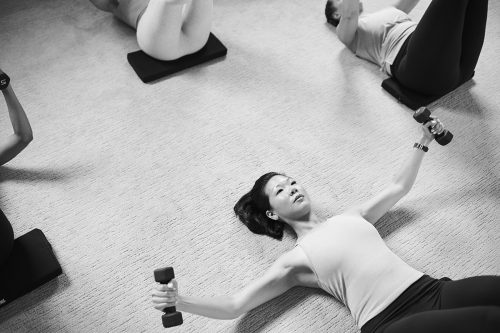
Frequently asked questions about serratus anterior muscle exercises
You know that strengthening the serratus anterior is important, but you may have questions on what’s involved in activating and stretching the muscle. We’ve got you covered.
How can you activate the serratus anterior muscle?
You can activate the serratus anterior by performing some of the exercises above, all of which target the muscle’s major functions. As a reminder, these include:
- Protraction (pulling the shoulder blade forward)
- Upward rotation (rotating the shoulder blade upwards)
- Scapular stability (holding the shoulder blade down and back)
By performing the exercises listed above, you can successfully activate and strengthen your serratus anterior.
How do you stretch the serratus anterior muscle?
While the serratus anterior doesn’t require much static stretching, tightness in surrounding muscles such as the pecs or upper traps can inadvertently restrict the serratus anterior’s movement. For that reason, you may want to add these stretches to the end of your workout routine to address any tightness:
- Active release with a foam roller. Lying on your side, position a foam roller underneath your armpit, rolling it slowly back and forth. Hold for a few seconds when you encounter a tight spot.
- Doorway chest stretch. Place your arms on either side of a door frame at shoulder height. Lean forward slightly as you stretch and push your chest through the doorway, feeling a stretch through your pecs.
- Sleeper stretch. Lying on your side with your top arm extended overhead, pull the top arm down across your body with your other hand, reaching behind your back. This should produce a gentle stretch in your chest and front shoulder.

Serratus anterior strengthening at the barre
You’ll encounter your fair share of serratus anterior strengthening during a Bar Method class: common barre exercises like push-ups, planks, rhomboid pulls, and oblique punches are all effective moves for this must-train muscle. Ask your instructor if you want help identifying and activating the serratus anterior during your next class!
More workout tips from The Bar Method
Want more barre tips? Check out these resources on our blog.
- How to Recover After a Barre Workout
- How Do You Know When You’re Ready for Barre Strength?
- Barre Myths: Debunked
Get expert barre instruction and experience a burn unlike any other at The Bar Method. Find a studio near you.

